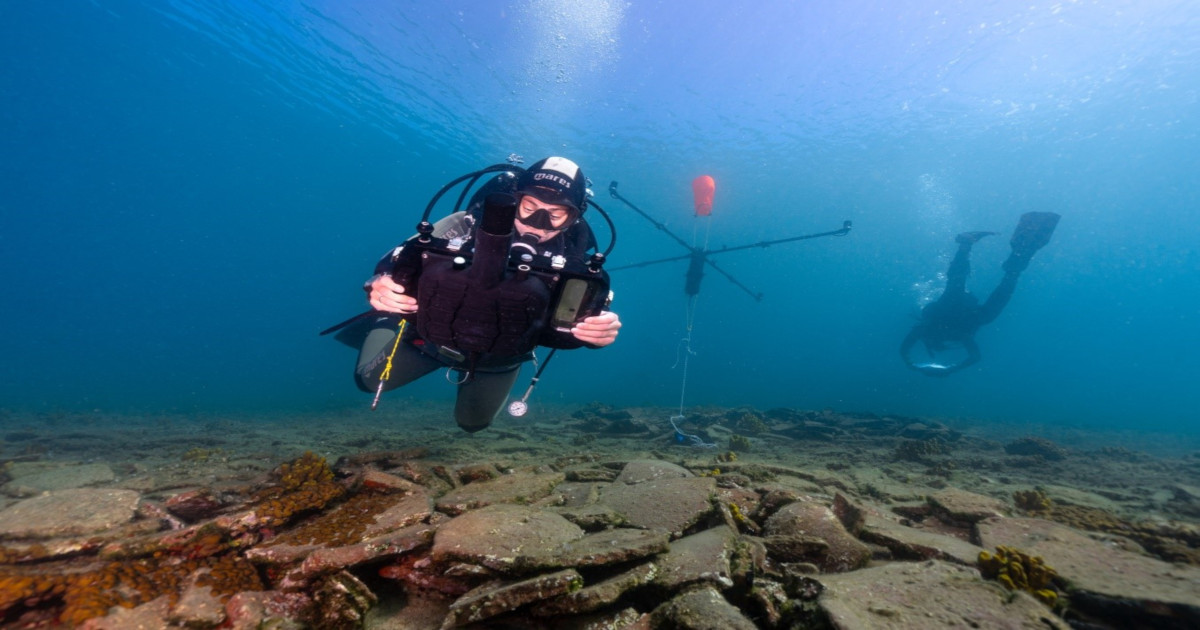Advanced Technologies for Maritime and Underwater Archaeology—2nd Edition
A special issue of Journal of Marine Science and Engineering (ISSN 2077-1312). This special issue belongs to the section "Geological Oceanography".
Deadline for manuscript submissions: 15 February 2026 | Viewed by 19139

Image courtesy of Fabio Bruno
Special Issue Editors
Interests: artificial intelligence; blockchain; deep learning; satellite systems; robot vision; cognitive robotics; sensor fusion; data fusion; mobile robotics; wireless networks; robotics; security; Internet of Things
Special Issues, Collections and Topics in MDPI journals
Interests: 3D recording; underwater technologies; virtual reality; augmented reality
Special Issues, Collections and Topics in MDPI journals
Interests: computer vision; underwater technologies; 3D recording; AR/VR technologies
Special Issues, Collections and Topics in MDPI journals
Interests: cultural heritage; characterization and diagnostics of stone building materials and their decay processes; experimentation of innovative protective products for materials; archaeometry; underwater archaeology
Special Issues, Collections and Topics in MDPI journals
Interests: cultural heritage; the characterization of stone building materials and their decay; the experimentation of innovative protective products; the archeometria study of chronologically different ceramic remains in subaerial and underwater environments
Special Issues, Collections and Topics in MDPI journals
Interests: marine geology; environmental oceanography; archaeological oceanography; marine remote sensing
Special Issues, Collections and Topics in MDPI journals
Interests: marine robotics (underwater and surface); autonomous systems; guidance, control and navigation; automatic control; nonlinear systems; identification
Special Issues, Collections and Topics in MDPI journals
Special Issue Information
Dear Colleagues,
Underwater cultural heritage (UCH) is a crucial asset for the knowledge of humankind’s history and traditions. It is tangible evidence of past human life that has to be protected to ensure its accessibility to present and future generations.
The documentation, preservation, and dissemination of UCH is an open challenge that is strongly interdisciplinary because it involves collaboration among various experts from different sectors, such as archaeology, geology, biology, marine science, engineering, robotics, computer science, and numerous other disciplines.
This Special Issue intends to collect original and high-quality research articles and technical notes devoted to the knowledge of underwater materials and promote innovative methodologies, applications, and emerging technological solutions on the subject of materials that lie underwater.
Submissions are welcome that contribute to providing a multidisciplinary forum for cutting-edge scientific and technological issues in materials science, underwater archaeology, archaeometry, cultural heritage, alteration and aging, climate impact, case studies, and other related fields involving the large and varied community of experts from around the globe working in the underwater cultural heritage field.
Contributions are invited on the following topics:
- Monitoring systems provide awareness of both the artefact conservation status and the surrounding environment.
- AI-based decision support system (DSS) that helps to collect data from the aerial and marine environment.
- Data process by means of AI techniques to infer subjacent relations among the parameters registered and to perform a comparative data analysis able to define which environmental aspects have a deeper impact on the preservation of the UCH.
- Remotely Operated Vehicles (ROVs) to perform and support the monitoring and maintenance activities that will be based on innovative modular and configurable architectures.
- Systems management and protocols for the maintenance and enhancement of UCHs.
- Underwater conservation and restoration strategies.
- Methodologies and digital tools for underwater and aerial archaeology.
- Sensors and innovative monitoring for the aerial and marine environment.
- Green Conservation strategies applied to Cultural Heritage.
- Sustainability and Cultural Heritage: New perspectives.
Dr. Javier Prieto
Prof. Dr. Fabio Bruno
Dr. Antonio Lagudi
Dr. Michela Ricca
Prof. Dr. Mauro Francesco La Russa
Prof. Dr. George Papatheodorou
Prof. Dr. Nikola Mišković
Guest Editors
Manuscript Submission Information
Manuscripts should be submitted online at www.mdpi.com by registering and logging in to this website. Once you are registered, click here to go to the submission form. Manuscripts can be submitted until the deadline. All submissions that pass pre-check are peer-reviewed. Accepted papers will be published continuously in the journal (as soon as accepted) and will be listed together on the special issue website. Research articles, review articles as well as short communications are invited. For planned papers, a title and short abstract (about 250 words) can be sent to the Editorial Office for assessment.
Submitted manuscripts should not have been published previously, nor be under consideration for publication elsewhere (except conference proceedings papers). All manuscripts are thoroughly refereed through a single-blind peer-review process. A guide for authors and other relevant information for submission of manuscripts is available on the Instructions for Authors page. Journal of Marine Science and Engineering is an international peer-reviewed open access monthly journal published by MDPI.
Please visit the Instructions for Authors page before submitting a manuscript. The Article Processing Charge (APC) for publication in this open access journal is 2600 CHF (Swiss Francs). Submitted papers should be well formatted and use good English. Authors may use MDPI's English editing service prior to publication or during author revisions.
Keywords
- underwater cultural heritage
- virtual and augmented reality
- marine robotics
- artificial intelligence
- underwater 3D imaging
- conservation
- diagnostics
Benefits of Publishing in a Special Issue
- Ease of navigation: Grouping papers by topic helps scholars navigate broad scope journals more efficiently.
- Greater discoverability: Special Issues support the reach and impact of scientific research. Articles in Special Issues are more discoverable and cited more frequently.
- Expansion of research network: Special Issues facilitate connections among authors, fostering scientific collaborations.
- External promotion: Articles in Special Issues are often promoted through the journal's social media, increasing their visibility.
- Reprint: MDPI Books provides the opportunity to republish successful Special Issues in book format, both online and in print.
Further information on MDPI's Special Issue policies can be found here.











